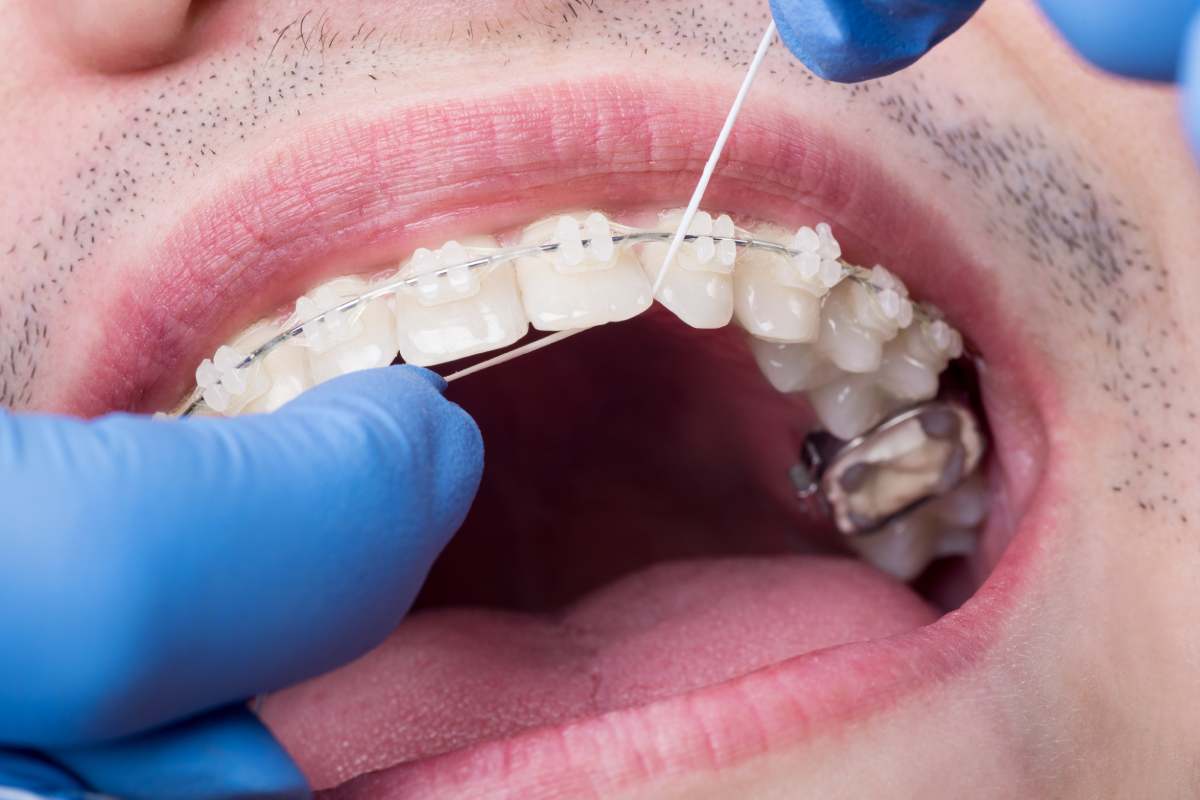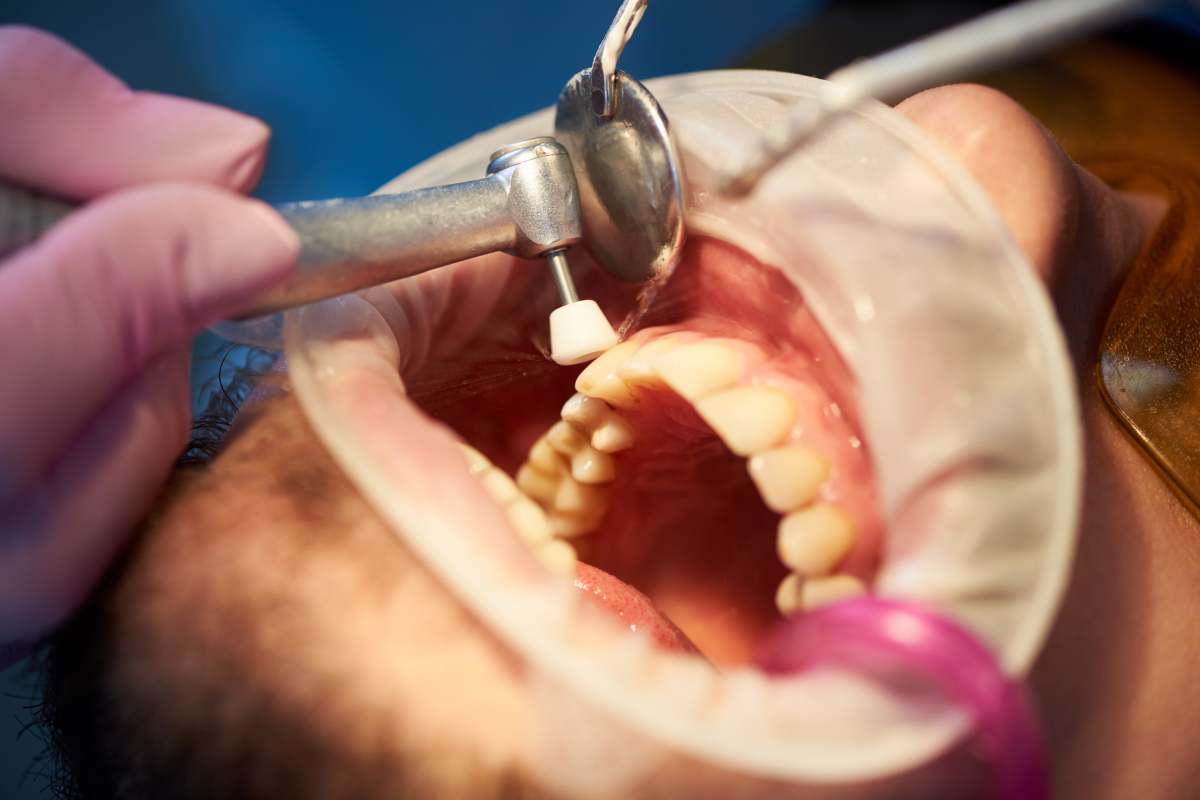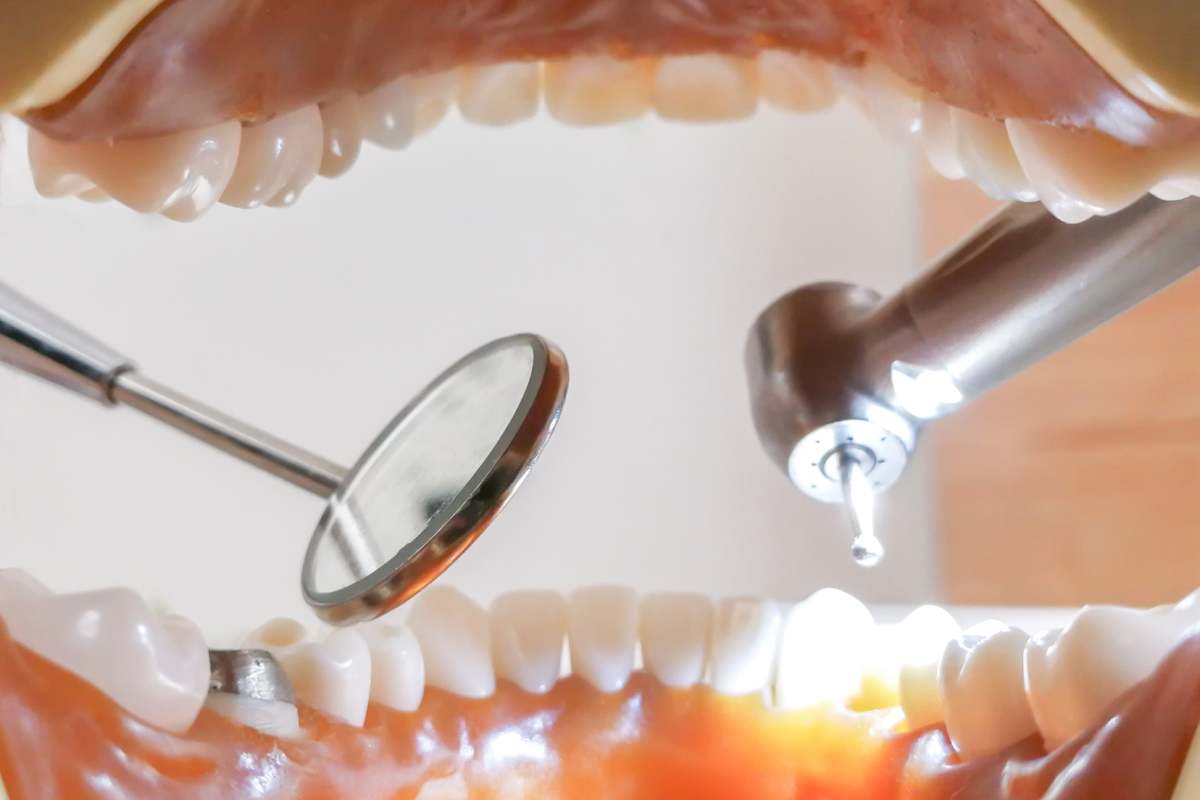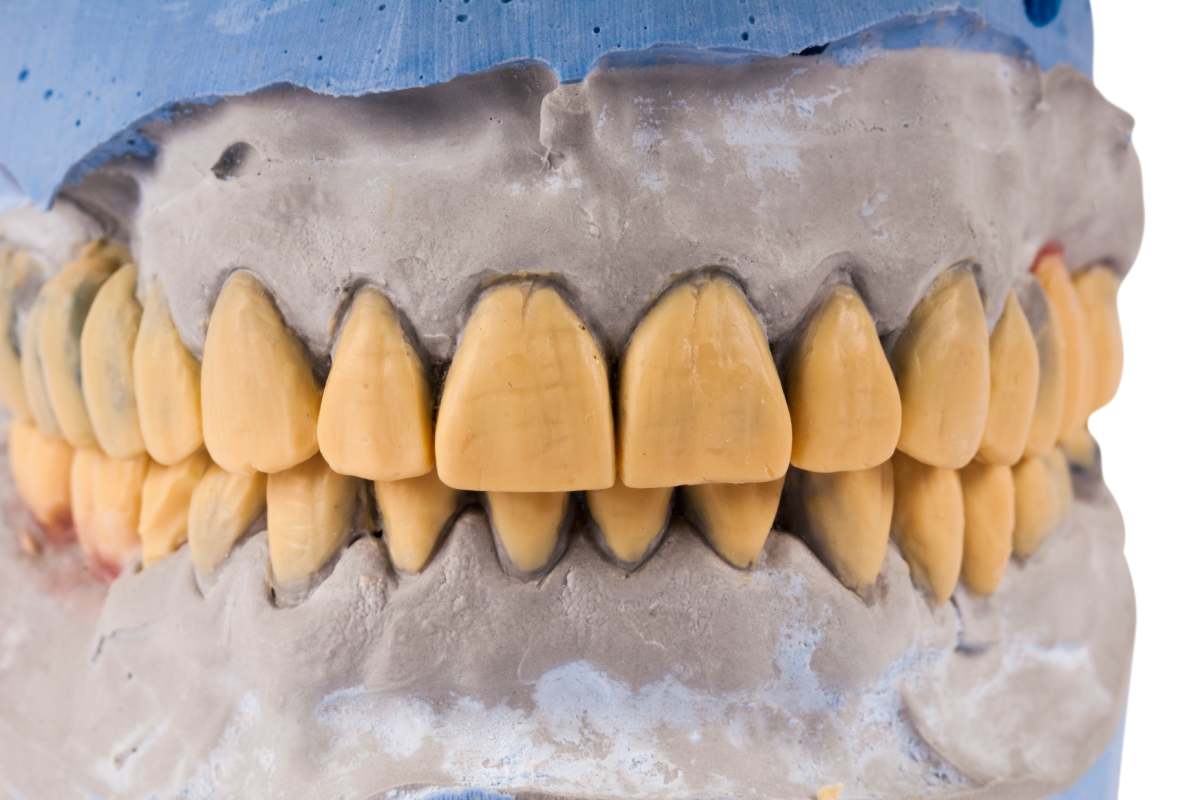What is a plaque on your teeth? Can it be removed on its own? How much does plaque removal cost in Australia? Read this for more information
Plaque is a sticky film that builds up on your teeth daily—it’s that slippery or fuzzy feeling you notice when you wake up in the morning.
Scientists refer to plaque as a “biofilm” because it consists of a community of living microbes surrounded by a sticky polymer layer. This sticky coating allows the microbes to adhere to surfaces in your mouth, where they can form thriving colonies.
However, it’s crucial to remove plaque regularly through daily brushing and flossing, as well as regular dental cleanings. If left on your teeth, plaque can cause cavities, gingivitis, and other oral health problems. Taking these preventive steps helps keep your teeth and gums healthy and prevents dental issues in the long run.
What is a plaque on your teeth?
Imagine your teeth as a smooth, clean surface after you brush them. Throughout the day, however, a sticky film starts to build upon them. This film is called plaque. Plaque is made up of bacteria, bits of food, and saliva. It’s not something you can see easily because it’s usually colourless, but if you run your tongue over your teeth, you might feel a fuzzy or rough texture.
Plaque is a problem because the bacteria in it produce acids when they feed on the sugars in the foods and drinks you consume. These acids attack the hard enamel surface of your teeth. Enamel is the protective outer layer of your teeth that keeps them strong and healthy. When acids from plaque are allowed to sit on your teeth for too long, they can weaken the enamel. This can lead to cavities (tiny holes in your teeth) or even gum disease if plaque builds up along your gumline.

To get rid of plaque and protect your teeth, you need to brush them thoroughly at least twice a day and floss once a day. Brushing helps remove the plaque on the surfaces of your teeth, while flossing gets rid of plaque and food particles from between your teeth and under your gumline, where your toothbrush can’t reach as effectively.
If plaque isn’t removed regularly, it can harden and turn into tartar (also known as calculus), which is even harder to remove and can only be cleaned by a dentist or dental hygienist during a professional cleaning. Tartar buildup not only looks unpleasant but also makes it easier for more plaque to accumulate and can lead to more serious dental problems.
Preventing plaque buildup is important for keeping your teeth and gums healthy. Along with brushing and flossing, it’s also wise to watch what you eat and drink. Sugary and starchy foods and drinks can contribute to plaque formation, so limiting these can help protect your teeth. Regular visits to the dentist for check-ups and cleanings are also essential to catch any plaque or tartar buildup early and address any other dental concerns.
In summary, plaque is a sticky film of bacteria, food particles, and saliva that constantly forms on your teeth. It can lead to tooth decay and gum disease if not removed regularly through proper dental hygiene practices like brushing, flossing, and regular dental check-ups. So, next time you enjoy your chocolate bar or green tea, don’t forget to brush your teeth to prevent something such as plaque buildup in the future.
Can plaque be removed on its own?
Plaque cannot be removed on its own once it has formed. Plaque is a sticky film of bacteria, food particles, and saliva that adheres to the surfaces of your teeth. It forms continuously throughout the day, especially after eating and drinking. If left undisturbed, the bacteria in plaque produce acids that can harm your tooth enamel and gums, leading to dental issues like cavities and gum disease.
To remove plaque effectively, you need to practice good oral hygiene:
- Brushing: Brush your teeth thoroughly at least twice a day with a fluoride toothpaste. Use a soft-bristled toothbrush and brush in gentle circular motions to effectively remove plaque from all surfaces of your teeth.
- Flossing: Floss your teeth once a day to remove plaque and food particles from between your teeth and along the gumline. Flossing helps clean areas that your toothbrush can’t reach effectively.
- Regular dental visits: Schedule regular dental check-ups and cleanings with your dentist or dental hygienist. They can remove any hardened plaque (tartar or calculus) that has built up on your teeth using special instruments during a professional cleaning.
While you can’t prevent plaque from forming entirely, you can control it through consistent oral care habits. This includes not only brushing and flossing but also being mindful of your diet. Limiting sugary and starchy foods and drinks helps reduce the amount of plaque-forming bacteria in your mouth.

How do I know if I need to go to the dentist to remove the plaque on my teeth?
Knowing when to go to the dentist to remove plaque from your teeth is important for maintaining good oral health. Here are some signs and guidelines to help you determine if it’s time for a professional dental cleaning:
- Regular Check-ups: It’s generally recommended to visit your dentist every 6 months for a routine dental check-up and cleaning. During these visits, your dentist or dental hygienist will assess the health of your teeth and gums, remove any plaque or tartar buildup, and polish your teeth to remove surface stains.
- Feeling of Roughness: If you run your tongue along your teeth and they feel rough or fuzzy, it could indicate the presence of plaque or tartar. Even if your teeth look clean, plaque can still accumulate in areas that are difficult to reach with brushing and flossing alone.
- Gum Sensitivity or Bleeding: Bleeding gums when you brush or floss can be a sign of gingivitis, which is inflammation of the gums caused by plaque buildup. If you notice persistent gum sensitivity, inflammation, or bleeding, it’s important to see your dentist for an evaluation and professional cleaning.
- Persistent Bad Breath: Bad breath that doesn’t improve with brushing, flossing, and mouthwash can be a sign of oral bacteria buildup, which may indicate the presence of plaque and tartar.
- Visible Tartar or Stains: If you notice yellow or brown deposits on your teeth, particularly along the gumline or between teeth, this is likely tartar buildup. Tartar cannot be removed with regular brushing and flossing and requires professional cleaning to prevent further oral health issues.
- Changes in Tooth Sensitivity: Increased sensitivity to hot, cold, or sweet foods and drinks can indicate enamel erosion due to plaque acids. A dental cleaning can help remove plaque and protect your teeth from further damage.
If you experience any of these signs or if it has been more than 6 months since your last dental cleaning, it’s a good idea to schedule an appointment with your dentist. They can assess the condition of your teeth and gums, remove any plaque and tartar buildup, and provide personalized advice on maintaining good oral hygiene at home.
Remember, preventive care and regular dental visits are key to keeping your teeth and gums healthy and avoiding more serious dental problems in the future.

How much does plaque removal cost in Australia?
The cost of plaque removal (dental cleaning) in Australia can vary depending on several factors, including the location of the dental practice, the experience of the dentist or dental hygienist, and the extent of cleaning required. Here are some general guidelines:
- Regular Cleaning (Scale and Clean): A routine dental cleaning, also known as scale and clean, typically costs between AUD 150 to AUD 300 per session. This involves the removal of plaque and tartar from the surfaces of your teeth, polishing to remove surface stains, and fluoride treatment to strengthen enamel.
- Deep Cleaning (Periodontal Cleaning): If you have significant tartar buildup or gum disease (periodontal disease), your dentist may recommend a deep cleaning (periodontal cleaning). This involves scaling and root planing to remove plaque and tartar from deep below the gumline. The cost for deep cleaning can range from AUD 250 to AUD 500 or more per quadrant of the mouth (upper or lower jaw), depending on the severity of the condition.
- Additional Treatments: If additional treatments are required, such as fluoride application, antimicrobial treatment, or diagnostic tests, they may incur additional costs.
It’s important to note that dental fees can vary widely between different regions and dental practices within Australia. Some factors that can influence pricing include the dentist’s expertise, the use of advanced technologies, the complexity of the treatment needed, and whether the practice accepts private health insurance or offers payment plans.
To get an accurate estimate of the cost for plaque removal and dental cleaning, it’s best to contact dental clinics in your area and inquire about their fees. Many dental practices in Australia provide detailed pricing information upfront or during your initial consultation.
Additionally, if you have private health insurance that covers dental treatments, such as extras cover, it may help reduce out-of-pocket expenses for dental cleaning and other preventive services. Always check with your insurance provider to understand what is covered under your policy and any applicable waiting periods or annual limits.
Final thought
Dental plaque affects everyone—it’s a natural occurrence after eating certain foods and drinks. Normally, it doesn’t cause problems unless it accumulates on your teeth over time. To prevent serious oral health issues linked to plaque, make sure to see your dentist regularly and maintain good oral hygiene habits at home. This means brushing and flossing every day. By keeping your teeth free of plaque, you greatly lower your chances of developing cavities, gum disease, and other harmful conditions.
